Dresden – the Florence on the Elbe – was almost completely destroyed during WWII. Luckily it’s made an incredible comeback in recent years. The reconstruction of its baroque city centre is finally completed and several world-class museums are awaiting your coming. And if you’re done soaking up high culture, the pub quarter is begging for a visit as well. Trot Op! went and took a look for you.
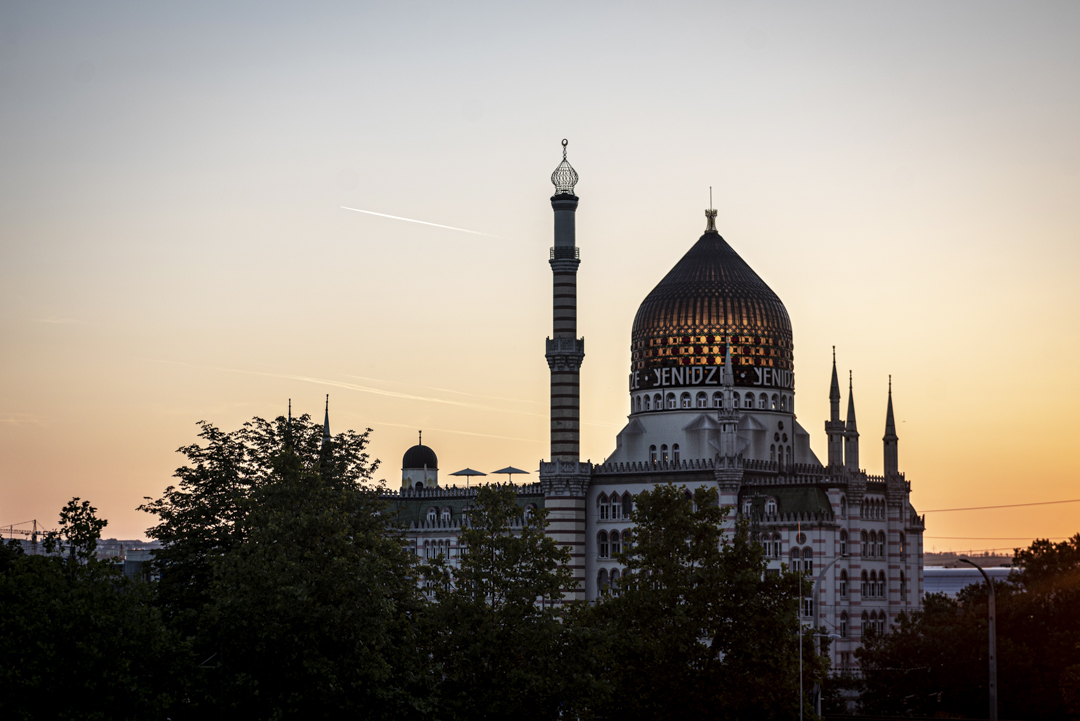
Quick bit of knowledge for the fact lovers among you: Dresden’s mesmerising skyline – full of graceful spires and domes – is secretly less than 50 years old. This is because the city was bombed to bits by the Allies in early ’45. An apocalyptic firestorm – read some witness reports if you want to get sick – and about 25.000 civilian casualties later, not two stones were left standing in one of Germany’s most beautiful baroque city centres. Add to this the fact Dresden found itself on the “less fun” side of the Iron Curtain after the war, and you know it took a while for the historic Altstadt to be rebuilt. Allow me to illustrate the situation: in 1994 the iconic Frauenkirche was still a pile of rubble, and the beautiful Residenzschloss was only fully restored in 2013. That is – a quick calculation will tell you this – just eight years ago.
“The mesmerising skyline of Dresden – full of graceful spires and domes – is secretly less than 50 years old.”
This said, if you walk through the streets today and you consistently failed your history classes, nothing would tell you a war crime took place here 75 years ago. Sadly it was somewhat different for the locals born after the facts. They grew up in a city full of ruins and ghosts. This while the Stasi would open a file on them after every suspicious cough, and all the tasty stuff was so scarce kids had to get by on one pack of bubble-gum for three months. I’d start getting moody too.
What to do in Dresden: a hip city trip in East Germany
It’s been over 30 years since Germany was reunited, and the whole DDR became a thing of the past. Today’s Dresden is once again what travel promoters call “a lively city on the move”. The centre looks as good as new, and the tourists found their way back in droves. Further away from the Altstadt, Dresden feels hip and young. It’s one of the main student towns in the region (45.000 of them live here) and it has a surprisingly wild and varied party scene. People looking for some nature will find lots of stuff to like as well. One of the main benefits of a 4.000 ton carpet bombing is in fact that afterwards you’re suddenly left with a whole lot of open space. Might as well put some nice parks on there then. Since the German Tourism Board asked me to join them on a cycling tour along the Elbe – yes, my little blog is doing well – and Dresden was chosen as the starting point for this adventure, I thought it opportune to first explore the city before getting on my bike. After some thorough research I came up with the following eight things you shouldn’t miss on a city trip to Dresden. Eins zwei Polizei, let’s get to it!
1. Get romantic in the historic Altstadt
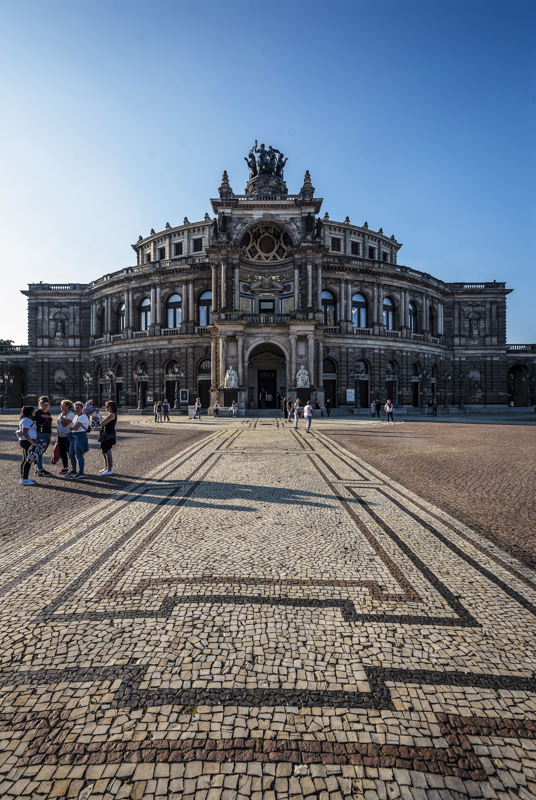
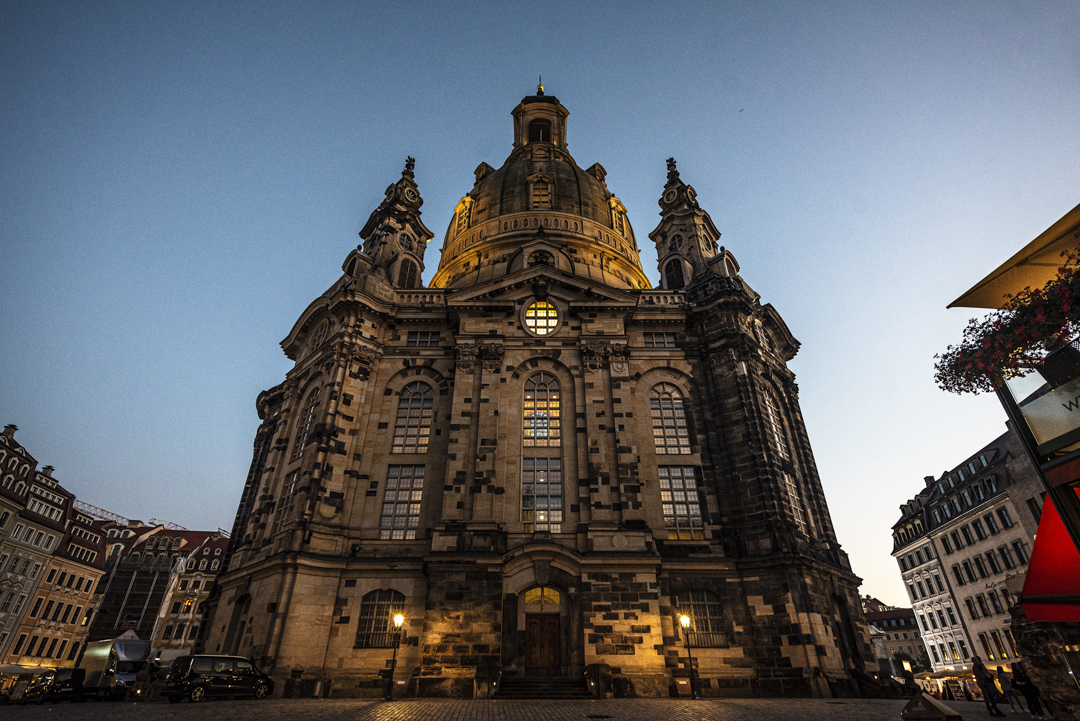

The old town – on the southern bank of the Elbe – holds most of the city’s touristic hotspots. As said in the intro, almost everything here is a reconstruction of the original buildings, which are mainly from the 18th century. The difference is barely noticeable, so don’t fret about it and just enjoy the views. Buy a ticket for one of the most beautiful opera halls in Europe; marvel at the splendour of the Dresdner Zwinger; have a drink on a terrace in the shadow of the Frauenkirche or take a romantic stroll on the river promenade with a healthy German Fraulein on your arm. Luckily most of the city’s art collections were moved before the bombing, so the museums are still stacked. In the Historisches Grünes Gewölbe (try pronouncing that, my English friends) and its completely over the top halls, you’ll find loads of artefacts from the days of August the Strong – whose mighty biceps helped built the baroque city – in the Gemäldegalerie Alte Meister you’ll see multiple works by Rembrandt, Rubens and Vermeer, and in Albertinum you can discover more recent masterpieces by for example Monet. Want to keep it a bit more playful? Visit Yenidze: an insane building looking like a Disney mosque that was actually a cigarette factory back in the day. The big glass dome on the rooftop now holds Dresden’s highest Biergarten. Zum Wohl!
2. Go party in the New Town

The so called Neustadt, on the other side of the Elbe, was mostly spared from the allied bombs. Ironically, this makes it older than its rebuilt neighbour across the water. Lots of day tourist might not spend that much time here, but the new town is where Dresden really comes to life. Hauptstraße – what’s in a name? – is this side’s main artery and on a sunny day it somewhat looks like the Ramblas in Barcelona. Explore a little more and you’ll soon find yourself in somewhat grittier looking streets: stately facades full of tags and street art housing countless bars, clubs and restaurants. The area around Görlitzer Straße is especially great when you’re looking for a party, but other parts are interesting as well. Just rent yourself a bike or go exploring on foot and see where you’ll end up. After coming across a random little festival in a park, I was making my way back to my hotel along the waterside. Several groups of young people were dancing, drinking and listening to music on the river bank, with the lit up domes of the old town as a beautiful backdrop. Wonderful atmosphere. Dresden is the perfect place to go for some post corona party time.
3. Be arty farty in Kunsthofpassage

Close to Görlitzer Straße and hidden behind a gate lies one of the most colourful places in Dresden. Kunsthofpassage is an artistic enclave and a network of interconnecting courtyards in which a couple of artists got creative. The result is a rainbow of colours, artsy shops and some nice little terraces to enjoy a latté macchiato and (why not?) a slice of vegan carrot pie while you stare at your Macbook pretending to finish your first novel. Every courtyard has its own theme. The most photographed place is without a doubt Hof der Elemente, where a tangle of pipes was attached to a tall blue wall. These pipes make their own music whenever it rains. This is not only pretty cool, it’s also well thought out. Now a reasonable number of tourists will still be there to watch the show, even when the weather is shit. They even built a little platform in front of the wall, for you to make your Instagram selfie in a photographically pleasing way. A small gesture with a large impact: quite moving indeed. www.kunsthof-dresden.de
4. Visit a petting zoo in the city centre
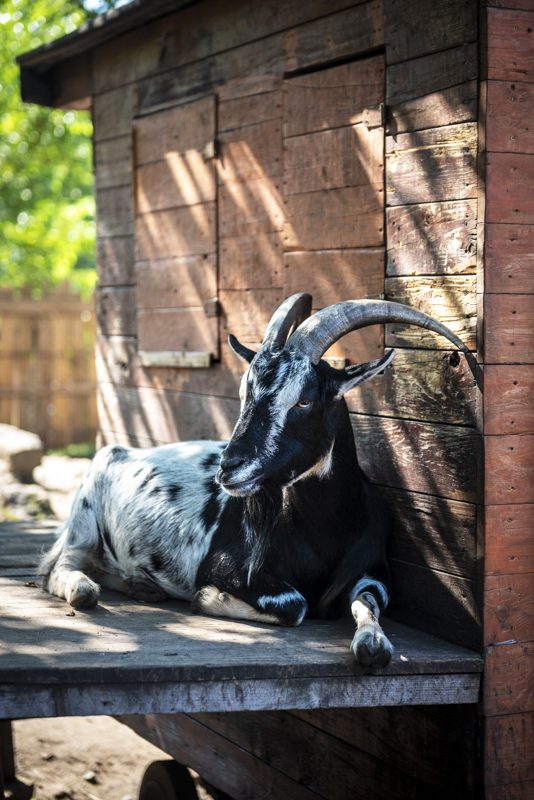

*These animals do not care for me.
After getting a coffee while finishing my magnum opus – an exciting thriller about a park where dinosaurs from the Jurassic era are brought back to life with advanced cloning techniques: I’ll call it “Billy and the Clonosaurus” – I unsuspectingly walked through another gate across the street. Surprisingly, I was greeted by a bunch of free range chickens. I found myself in a little green oasis, including a small peaceful pond and a wooden playground. A whole petting zoo was built up here, in the middle of one of the busier parts of Dresden. Chickens, goats, ponies and rabbits: they all found a home here. The project is run by ASP Panama, and is a bit of a strange sight in the centre of a large city. It’s a good idea nonetheless. All sorts of activities are organised here to get city kids acquainted with animals they normally rarely get to see. There are horse riding lessons, volunteers teach them how to take care of the animals, and they get to pull up their sleeves and do some actual manual labour occasionally. Seems like a project some Belgian cities could benefit from as well. That one old buck was giving me some viciously condescending looks while chewing his food though. Can’t befriend everybody I guess. www.panama.treberhilfe-dresden.de
*Blatantly stolen from The Simpsons.
5. Go mountain-biking in a forest

Was that petting zoo not enough to satisfy your countryside aching? Want the full experience without actually having to leave the city? No need to panic! Dresden has its own city forest. It’s surprisingly vast, can be found behind Alaunpark in the new town and follows a little river all the way outside the centre. Perfect for a brisk stroll or to test your mountain biking skills: I picked option number one. After walking under a high concrete bridge, I saw a shoddily built hut standing on top of a steep muddy hill. Thinking it was something the local boy scouts built, I decided to climb the hill for a closer inspection. Suddenly a half dressed, middle aged man jumped out. After a short conversation in my superbly limited German, it appeared he’d been living here for quite a while, surviving on the change he got from the empty bottles people left him. Either the rent in Dresden is insanely high, or this man had the world’s worst neighbours. Who knows?
6. Reflect on the war in Dresden’s Military History Museum


The Militärhistorisches Museum is an imposing building and a prime example on how to combine classic architecture with ultramodern elements to make it into something unique and iconic. For the people from Antwerp: the new Port Building is a good example, the Aldi store they’re attaching to the Steen Caste is not. The logo on the museum’s façade is as evocative as the building itself. A German eagle ripping apart a swastika: as a message it’s pretty clear. The collection does not focus on the glory of war, but on the origin of conflicts, the underlying economy and the consequences for regular soldiers, women, children or even animals. Outside of these themes you will see all sorts of things: from an original V2 rocket to personal possessions of people who didn’t make it out of the concentration camps. This is not a museum you will leave unscathed. No time to see the whole collection? Just stay outside and take a look at the tank collection – it’s free and pretty impressive. www.mhmbw.de
7. Pour yourself a pint on the Lingnerterrassen
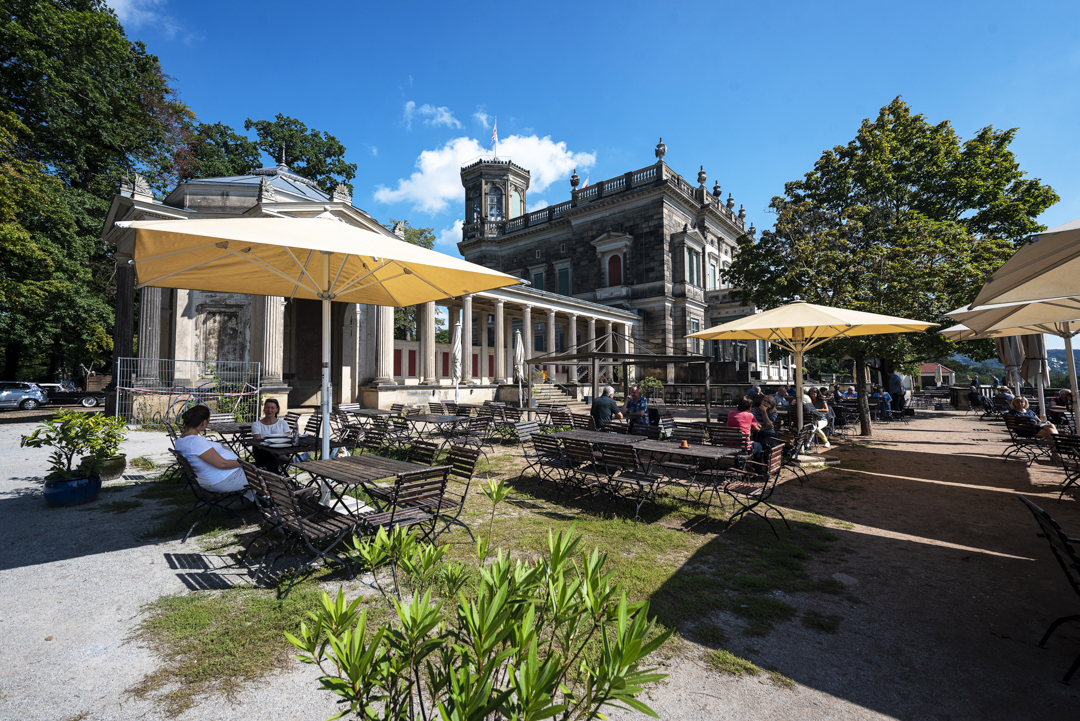
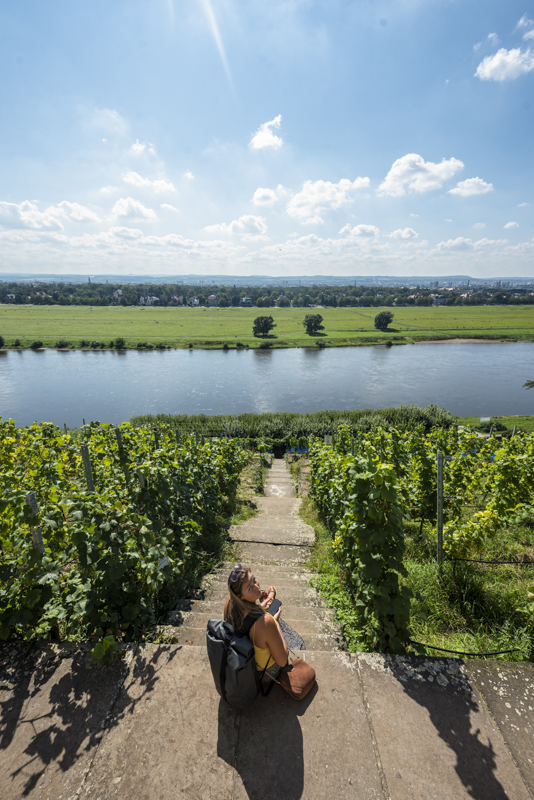
Is there one thing uniting the Germans and the Brits more than getting sunburnt on holiday in Turkey wearing sandals over white socks? Yes there is: it’s getting absolutely hammered. In Germany they’ve invented the beer gardens for this purpose. This is where the whole population gets together singing jolly Schlager songs while getting drunk on giant pints of beer. In Dresden you won’t find a more photogenic Biergarten than the one on the Lingnerterrassen a couple of kilometres outside of the city. High above the Elbe and accessible via a steep set of stairs running straight through the vineyards, a beautiful castle looks out over the area. From the Lingnerschloss terrace, you’ll get a superb view over the river and the city as a whole, and the food is surprisingly affordable (food in general seems to be cheaper than in Belgium here). So get yourself a table and a big fat Bratwurst to stuff your face with, wash it down with a cold pint of Weißbier and you’ll be good to go for an hour or two. www.lingnerterrassen.de
8. Get tickets for the drag queen show at Carte Blanche
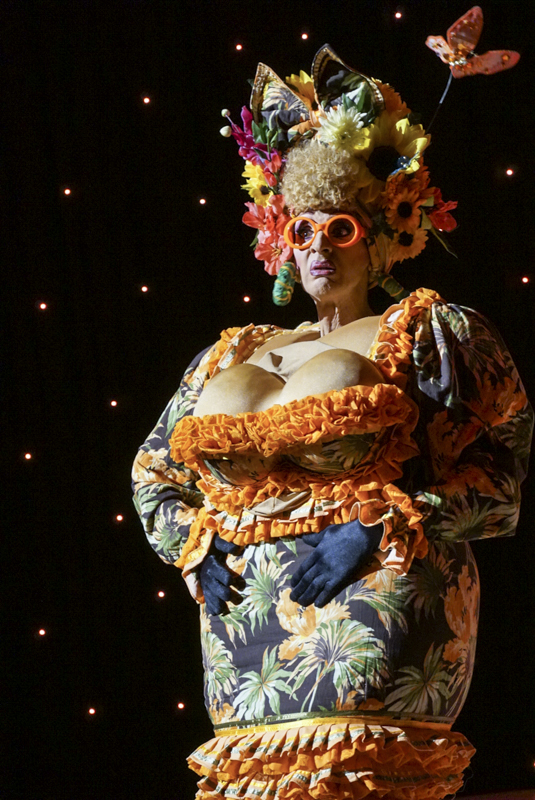
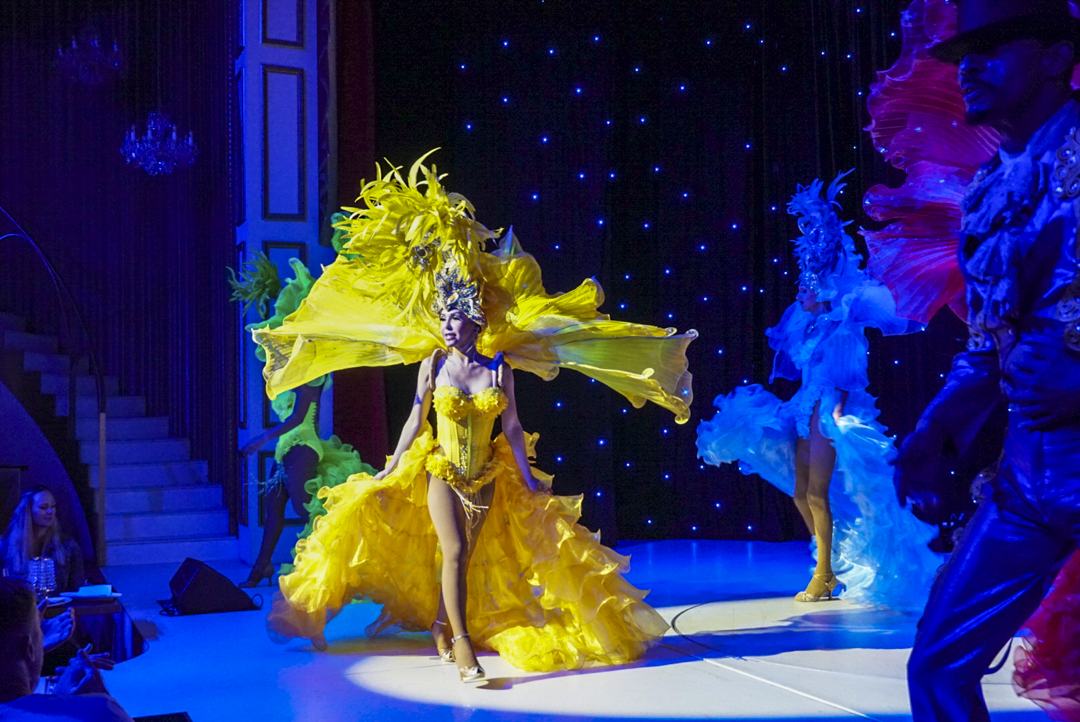
*Pictures by Silke Lamoen, Travelrebel.
Everyone paying attention to the names of the bars in Neustadt will eventually figure out Dresden has quite the lively LGBTQIA+ scene (are that all the right letters? Am I doing it right?) With Carte Blanche – we got a surprise tour of this place – they also have one of the biggest drag queen shows on the continent (or so they say, I’m not an expert on the matter). The theatre is so bombastically furnished it instantly gets you in the right mood, and the costume collection does the same thing. My colleague Silke from Travelrebel fixed herself some free tickets and told me the show was superbly entertaining. So leave that comfort zone, stick some feathers up your ass and surrender to an evening of good old hilarity. When Silke was enjoying the show, I came across a local gay pride festival. These things are a bit more political in Germany (gay marriage has only been legal here from 2017). This makes for a lot of pamphlets, slogans and demands on the main parade. The fact a place like Carte Blanche has been very successful here for at least 15 years, can only be applauded in this light. www.carte-blanche-dresden.de
Hotels in Dresden and practical info
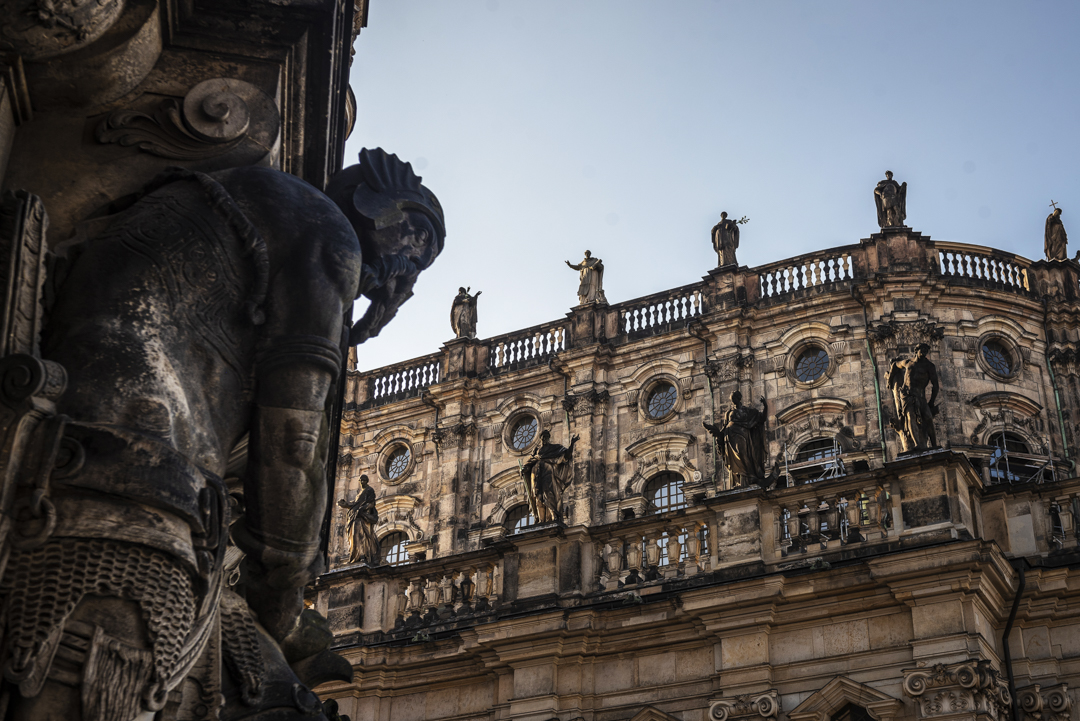
That’s all I had to say about my stay in Dresden. Click here and here for the other posts I made after my cycling trip through East-Germany.
We stayed in Dresden’s Maritim Hotel, next to the conference centre and very close to the old town. www.maritim.de
For more info about Dresden as a destination, surf here: www.dresden.de/en/tourism/tourism.php.
For all information on the Elberadweg and the things you can see along the way, surf to: www.elbe-cycle-route.com.
Looking for more info on Germany as a whole, visit: www.germany.travel .
Our trip was arranged by Joker Reizen: www.joker.be.
Looking for some other trips? Read my posts on the Frisian Isles, Diest, Limburg, Rupelstreek and Mechelen.























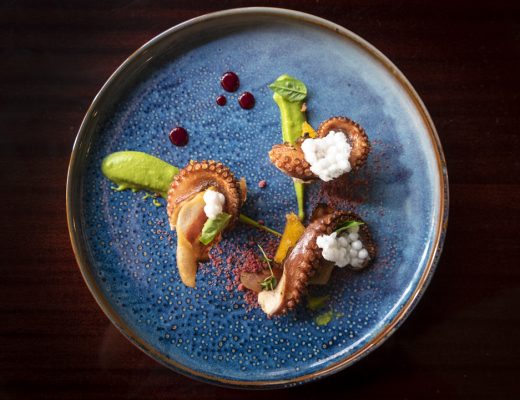
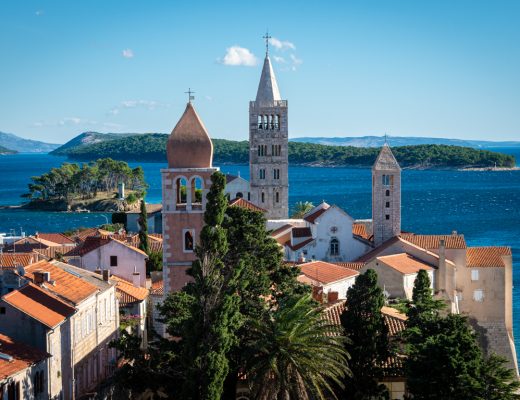

6 Comments
Ramael marc
September 22, 2021 at 1:11 pmToffe blog .
Jonathan Ramael
September 22, 2021 at 6:37 pmMerci! 🙂
Stefan
September 22, 2021 at 6:36 pmZiet er wel een leuke stad uit, die regenpijpen wil ik ook wel is in actie zien
Mooie foto’s!
Jonathan Ramael
September 24, 2021 at 1:53 pmMercikes! ^^
rozemarijn
September 24, 2021 at 12:47 pmstond al lang op mijn verlanglijstje, maar nu wil ik er zeker heen
Jonathan Ramael
September 24, 2021 at 1:54 pmPakt die van olle mee! 😉